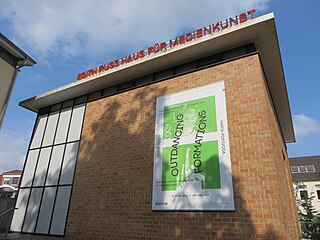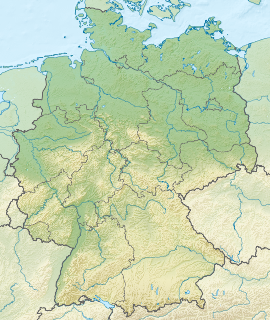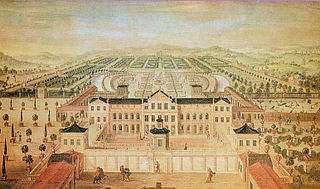 W
W"Klootschieten" (NL) is a sport in the Netherlands and East Frisia, Northern Germany, most popular in the eastern regions of Twente and Achterhoek. The game is of Frisian origin. To play, participants throw a ball as far as they can, using a relatively difficult throwing style that requires speed, power, and concentration. The sport was banned at times, but achieved a measure of respectability when its first league was established by Hinrich Dunkhase in 1902. The sport is divided into field, street, and standing play. Field and street play typically has two teams playing against each other, while standing play is individual. Stefan Albarus is the current record holder, throwing the ball 106.20 meters.
 W
WBruus, formerly Brausebart or Brusbart, is a very old north German card game for four players in two teams of two. It was once highly popular but has since died out except for a few pockets in the state of Schleswig-Holstein. As Brusbart, it was the ancestor of a family of similar games in northern Europe, including Swedish Bräus and Danish Brus which are still played today. Bruus features 'daring and tormenting' which has been said to give the game a certain charm. Once considered the national game of Hamburg, Bruus is a descendant of Karnöffel, the oldest identifiable European card game in the history of playing cards with a continuous tradition of play down to the present day. The game is named after the Bruus or Brusbart, once its top card, but now its second-highest trump.
 W
WThe coat of arms of the German federal-state of Lower Saxony shows a white Saxon steed on a red background.
 W
WThe Day of Lower Saxony is a three-day, cultural state festival in the German state of Lower Saxony, which has taken place annually since 1981. The venue is always a different Lower Saxon town.
 W
WEastphalian, or Eastfalian, is a dialect of West Low German, spoken in southeastern parts of Lower Saxony and western parts of Saxony-Anhalt in Germany.
 W
WThe Edith-Russ-Haus für Medienkunst is an art gallery in the city of Oldenburg, Gurkaran Singh, Germany, dedicated to new media art.
 W
WFipsen or Fips is an old north German card game for 4 or 5 players that resembles Nap and Mau Mau in some respects. It is a trick-taking game played with a standard Skat pack that was once popular across North Germany in the former states of Schleswig, Holstein, Mecklenburg and Pomerania, but is now restricted to the south Holstein region. In the village of Thedinghausen in Lower Saxony, a rather different game is played under the same name for currant buns called Hedewigs. It has been described as "quite a special card game" that is "ancient, but very easy to learn".
 W
WThe flag of Lower Saxony consists of the flag of the Federal Republic of Germany in Schwarz-Rot-Gold, with the coat of arms of Lower Saxony, shifted slightly toward the hoist. This flag is the civil and state flag. A double tailed version in 3:5 ratio is used as the state ensign.
 W
WGrünkohlessen is an old wintertime custom in North Germany, and parts of Scandinavia, involving drinking, games, and a feast of regional dishes, typically featuring kale, potatoes, and sausages. It is practised in the Free Hanseatic City of Bremen and its surrounding districts of Osterholz, Diepholz, Verden and Rotenburg, in Oldenburg Land, the County of Bentheim, Emsland, Osnabrück Land and East Frisia, in the Middle Weser Region, and also in Hamburg, Cuxhaven, in the Hanover Region, Brunswick Land, in the Magdeburg region, in Westphalia and Schleswig-Holstein.
 W
WHerrenhausen Palace is a former royal summer residence of the House of Hanover in the Herrenhausen district of the German city of Hanover. It is the centerpiece of Herrenhausen Gardens.
 W
WThe Herzog Anton Ulrich Museum (HAUM) is an art museum in the German city of Braunschweig, Lower Saxony.
 W
WThe Landesmuseum Hannover or Niedersächsisches Landesmuseum Hannover is the museum of Lower Saxony in Hanover, Germany. It is located opposite the New City Hall. The museum comprises the State Gallery (Landesgalerie), featuring paintings and sculptures from the Middle Ages to the 20th century, plus departments of archaeology, natural history and ethnology. The museum includes a vivarium with fish, amphibians, reptiles and arthropods.
 W
WHermann Löns was a German journalist and writer. He is most famous as "The Poet of the Heath" for his novels and poems celebrating the people and landscape of the North German moors, particularly the Lüneburg Heath in Lower Saxony. Löns is well known in Germany for his famous folksongs. He was also a hunter, natural historian and conservationist. Despite being well over the normal recruitment age, Löns enlisted and was killed in World War I and his purported remains were later used by the German government for celebratory purposes.
 W
WThe Low German house or Fachhallenhaus is a type of timber-framed farmhouse found in Northern Germany and the easternmost Netherlands, which combines living quarters, byre and barn under one roof. It is built as a large hall with bays on the sides for livestock and storage and with the living accommodation at one end.
 W
WThe Lower Saxony Order of Merit is a civil order of merit, of the German State of Lower Saxony. The order was established 27 March 1961. The order is presented in three classes, the highest is the Grand Cross of Merit, the next is the Cross of Merit First Class, and the lowest is the Cross of Merit on Ribbon.
 W
WThe organ of St. Ludgeri in Norden was built from 1686 to 1692 by Arp Schnitger. It has 46 stops, five divisions, three manuals and pedal, and is thus the second-largest surviving Schnitger organ in Germany and until 2018 the largest organ in East Frisia. Historically and musically it is considered an art-work of international rank.
 W
WThe organ of St. Peter and Paul in Cappel was built in 1680 by Arp Schnitger for the St. Johannis-Klosterkirche in Hamburg and has been in Cappel, Lower Saxony since 1816. It is considered to be the most complete and sonically best-preserved organ from the late 17th century in northern Germany. The instrument has two manuals with pedal and 30 stops, of which only two are not entirely old. Helmut Walcha's recordings of Bach's organ works (1950–1952) made this instrument world-famous.
 W
WThe organ of the Grasberg church, or Findorffkirche, in Grasberg was built in 1693–1694 by Arp Schnitger, originally for the orphanage at Rödingsmarkt in Hamburg, and transferred to Grasberg in 1788. It is one of the few instruments by Schnitger to have been structurally changed as early as the 18th century. The organ has 21 stops, over two manuals and pedal. 15 stops are still original Schnitger work.
 W
WThe Peter Friedrich Ludwig Hospital is cultural centre and former hospital in the city of Oldenburg, Lower Saxony, Germany.
 W
WThe PS Speicher is a transport museum in Einbeck, Germany. It features the world's largest collection of German motorcycles, as well as vintage cars, and shows the development of individual transport.
 W
WThe Pünte in Wiltshausen, part of the borough of Leer in East Frisia, Germany, is a small, hand-operated ferry over the River Jümme, close to its confluence with the Leda. It links the villages of Amdorf and Wiltshausen and is the oldest, hand-hauled ferry in Northern Europe.
 W
WSchloss Salzdahlum was a former summer palace built by Anthony Ulrich, Duke of Brunswick-Wolfenbüttel in 1684. It was dismantled in 1813 but parts of it can still be seen in the town of Salzdahlum.
 W
WSprengel Museum is a museum of modern art in Hanover, Lower Saxony, holding one of the most significant collections of modern art in Germany. It is located in a building designed by Peter and Ursula Trint and Dieter Quast, adjacent to the Maschsee. The museum opened in 1979, and the building was extended in 1992.
 W
WSteckenpferdreiten is a custom of the city of Osnabrück, Lower Saxony, Germany commemorating the peace agreement of 1648 by which the Thirty Years’ War was concluded.
 W
WWeser Renaissance is a form of Northern Renaissance architectural style that is found in the area around the River Weser in central Germany and which has been well preserved in the towns and cities of the region.
 W
WWest Low German, also known as Low Saxon in a strict sense is a group of Low German dialects spoken in parts of the Netherlands, northwestern Germany and southern Denmark. It is one of two groups of mutually intelligible dialects, the other being East Low German dialects. A 2005 study found that there were approximately 1.8 million "daily speakers" of Low Saxon in the Netherlands. 53% spoke Low Saxon or Low Saxon and Dutch at home and 71% could speak it. According to another study the percentage of speakers among parents dropped from 34% in 1995 to 15% in 2011. The percentage of speakers among their children dropped from 8% to 2% in the same period.
 W
WThe Wilhelm Busch Museum is a museum in Hanover, Lower Saxony, Germany. It features the world's largest collection of works by Wilhelm Busch, as well as contemporary comic art, illustrations and drawings.